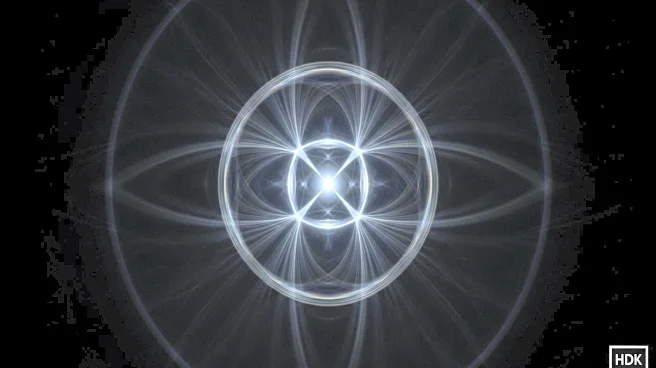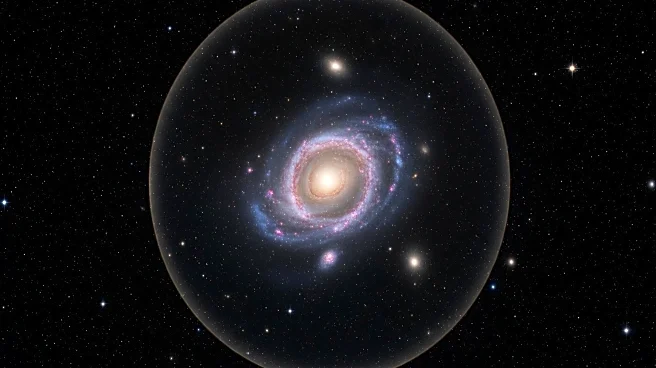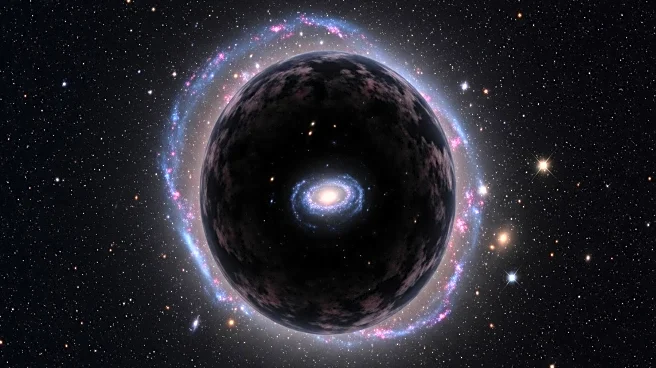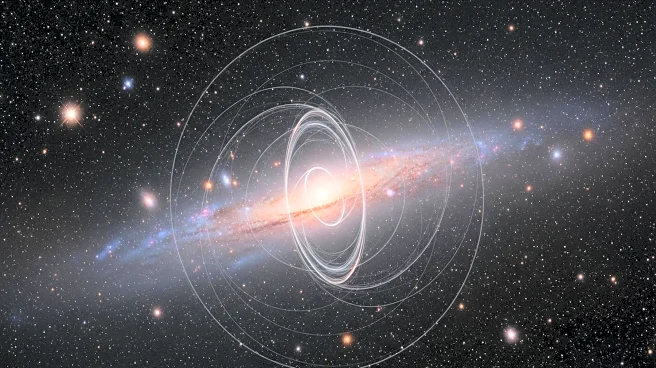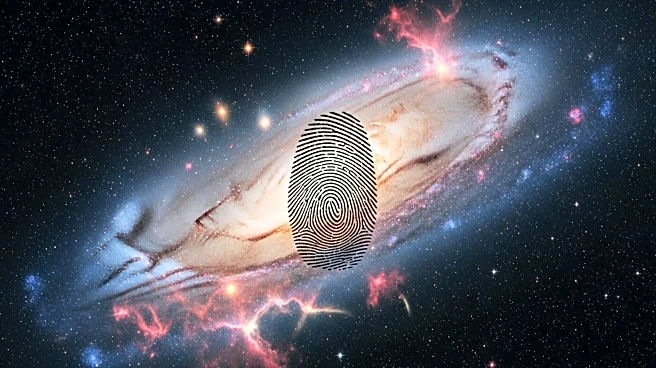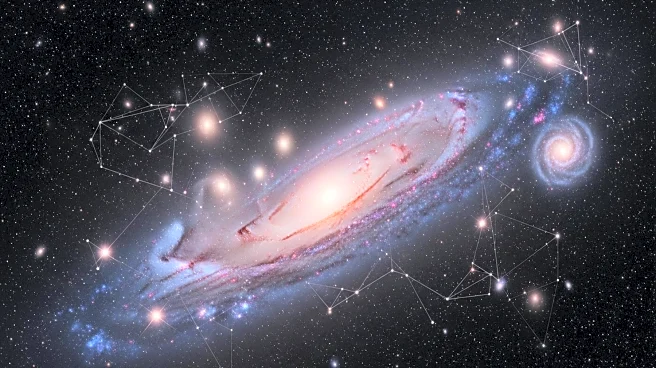What's Happening?
Astronomers have identified a rare cosmic phenomenon known as an 'Einstein Cross,' which has provided new insights into the location of dark matter. The discovery was made by a team led by Pierre Cox from the French National Center for Scientific Research. The Einstein Cross, named HerS-3, features an unusual fifth blob of light at its center, which is not typically observed in such configurations. Theoretical astrophysicist Charles Keeton from Rutgers University noted that this anomaly suggests the presence of dark matter influencing the light's path. The HerS-3 galaxy, a dusty star-forming entity near the edge of the visible universe, has emitted light traveling for 11.7 billion years to reach Earth. The researchers concluded that a dark matter halo is responsible for the unique lensing effect observed, as computer models ruled out visible galaxies as the cause.
Why It's Important?
This discovery is significant as it provides a unique opportunity to study dark matter, a mysterious substance that interacts with the universe primarily through gravity. The presence of dark matter is inferred from gravitational effects that cannot be explained by visible matter alone. The Einstein Cross phenomenon allows astronomers to magnify and study distant galaxies, offering insights into cosmic evolution and the characteristics of dark matter. Understanding dark matter is crucial for comprehending the universe's structure and behavior, as it constitutes a substantial portion of the universe's total mass. The findings from HerS-3 could lead to advancements in astrophysics and cosmology, potentially unveiling new aspects of galaxy formation and evolution.
What's Next?
The research team plans to further explore the HerS-3 system as an astrophysical laboratory to study the characteristics of the galaxy group lensing HerS-3 and the properties of the associated massive dark matter halo. This could involve more detailed observations and modeling to understand the interactions between dark matter and visible galaxies. The study's results, published in The Astrophysical Journal, may prompt additional investigations into similar cosmic phenomena, enhancing our understanding of dark matter and its role in the universe.
Beyond the Headlines
The discovery of the HerS-3 Einstein Cross highlights the potential for unexpected findings in astrophysics, driven by chance configurations in space. It underscores the importance of advanced modeling techniques in revealing unseen cosmic elements like dark matter. This event also raises questions about the nature of dark matter and its influence on galaxy formation, potentially leading to new theories and models in cosmology.

